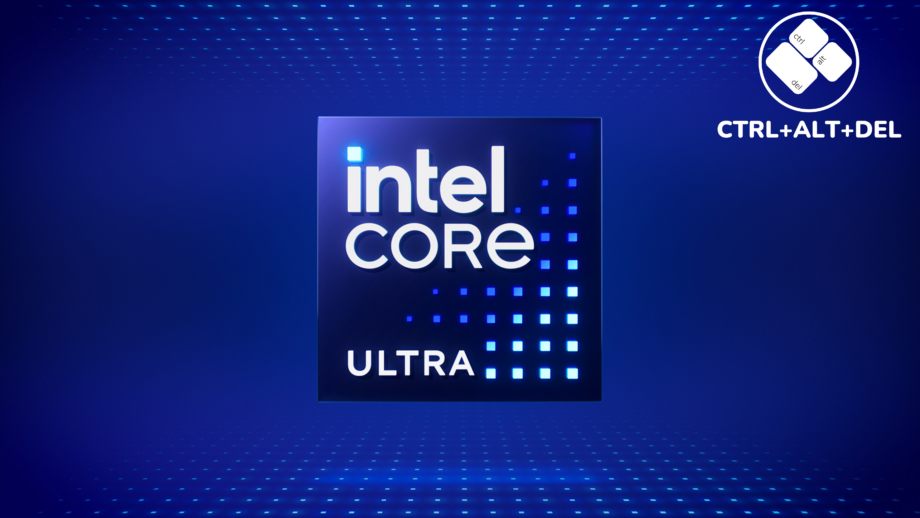Ctrl+Alt+Del: Intel doesn’t care if you buy the wrong processor

OPINION: This week, Intel revealed its rebranding of its processors, the biggest for 15 years. As it stands, and along with some comments from Intel, the changes appear openly aimed at consumer confusion.
For a more detailed explanation of the new naming scheme, delve into my Intel Core Ultra explainer. But, the skinny is that the “i” moniker is gone and that Intel has split its chips into Core and Core Ultra sets. But, additional naming conventions like U/P/H-series aren’t going away so it remains unclear how Core and Core Ultra differ. Intel says that Core is the “mainstream” brand and “Core Ultra” is the premium.
So, what’s the point? Intel has given varied reasoning for the change but a prominent one is simplification. That is absolutely valid and it’s hard to argue that “14th Gen Intel Core i9 14900H” isn’t more complicated than “Intel Core Ultra 9 1900H” – these aren’t real names, just some I’ve dreamed up based on Intel’s examples and guidance on the likely structure.
However, if you dig a little deeper, things start to look a little less consumer-friendly. Another reason Intel gave was that it would like its branding to be more prominent. The generation is often slapped in front of “Intel Core” and people typically refer to chips as just “i3” or “i5” etc. and this does largely do away with that. You’ll now see Intel Core right at the front and Intel thinks you’ll now say you’ll have a “Core 3” or “Core Ultra 5”, which it prefers.
But, did this lack of Intel branding right up front hurt customers? Having the generation upfront certainly didn’t hurt customers and I think ditching its prominence does the exact opposite. Generations can be so important when it comes to chips – one gen to another can represent a decent difference in performance and features, while a gap of two generations can be ginormous. That’s, unless, as part of this transition Intel intends to make the differences between generations less impressive.
For parity, it’s worth noting that Intel isn’t the only chip maker with confusing names. While Apple at least makes the generation clear when comparing an M1 with an M2, I imagine it’s difficult for the average Mac user to distinguish the difference from an M1 Ultra and M1 Max at a quick glance. AMD can often present confusingly branded processors too, so this issue isn’t exclusive to Intel. But, it’s how Intel has justified this change that has given me cause for concern.

I found Intel’s comments to The Verge particularly troubling. Senior Editor Sean Hollister rightly posited that consumers could accidentally buy last year’s chip under this new naming scheme. The response from Intel brand strategist Peter Thraves was disheartening to say the least, and suggests Intel doesn’t see such confusion as a problem. Thraves replied, “Our customers, OEMs, they have to sell a lot of older products… screaming ‘13th Gen’ highlights what’s new, but it also screams what’s old. We want to make it a little bit more flexible”.
The word ‘flexible’ feels like a rather political choice of wording. I just don’t know any other way to take this than thinking Intel is happy for users to buy previous generations by accident or simply be unaware there may be a better option. I suspect Intel’s point would be that the user may be perfectly happy with said chip, but they could potentially be spending their money better in such a case and getting more value from it.
Another counterpoint would be that the generation will remain in the numbered portion towards the end of the name and that it’s there for those that care to go looking for it. But, the more technologically savvy users that would care to go looking for it are the least likely to be misled by the absence of a generation at the beginning.
Having the generation at the beginning of the product was a clear distinction between the new and the old, ensuring that the customer could make an informed decision on whether they want the latest technology or would prefer to settle for a chip at a lower price. Intel’s new branding instead enhances the likelihood of consumer error – and that’s not on.
Ctrl+Alt+Delete is our weekly computing-focused opinion column where we delve deeper into the world of computers, laptops, components, peripherals and more. Find it on Trusted Reviews every Saturday afternoon.







